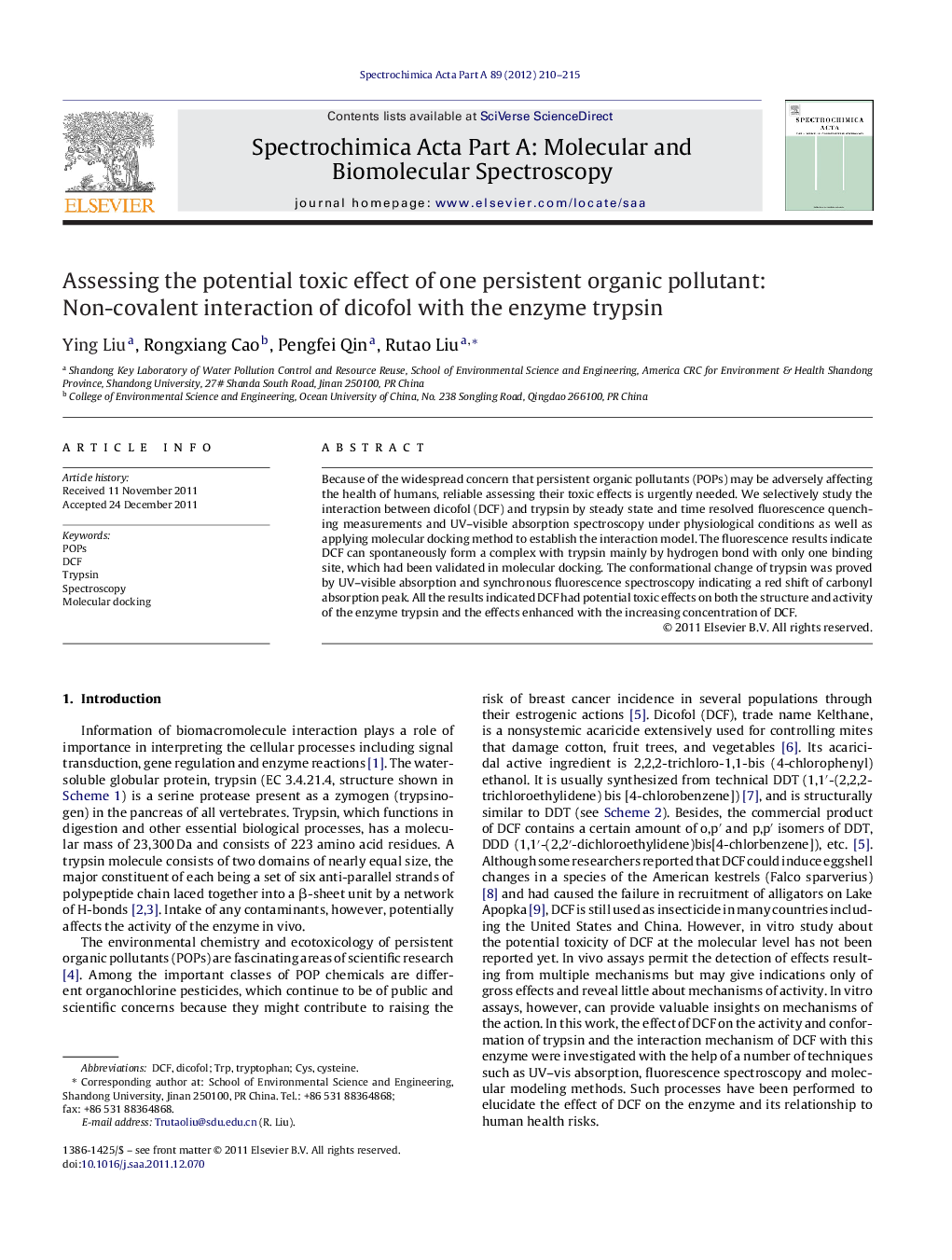| Article ID | Journal | Published Year | Pages | File Type |
|---|---|---|---|---|
| 1234669 | Spectrochimica Acta Part A: Molecular and Biomolecular Spectroscopy | 2012 | 6 Pages |
Because of the widespread concern that persistent organic pollutants (POPs) may be adversely affecting the health of humans, reliable assessing their toxic effects is urgently needed. We selectively study the interaction between dicofol (DCF) and trypsin by steady state and time resolved fluorescence quenching measurements and UV–visible absorption spectroscopy under physiological conditions as well as applying molecular docking method to establish the interaction model. The fluorescence results indicate DCF can spontaneously form a complex with trypsin mainly by hydrogen bond with only one binding site, which had been validated in molecular docking. The conformational change of trypsin was proved by UV–visible absorption and synchronous fluorescence spectroscopy indicating a red shift of carbonyl absorption peak. All the results indicated DCF had potential toxic effects on both the structure and activity of the enzyme trypsin and the effects enhanced with the increasing concentration of DCF.
Graphical abstractDicofol (DCF) binds to trypsin with one hydrogen bond, and it resulted in the conformational and micro-environmental changes of this enzyme.Figure optionsDownload full-size imageDownload as PowerPoint slideHighlights► We investigated the toxic effect of dicofol in molecular level. ► The experiments show conformation and activity of trypsin has been affected by DCF. ► Potential links in trypsin's changes of structure and function were found by docking.
